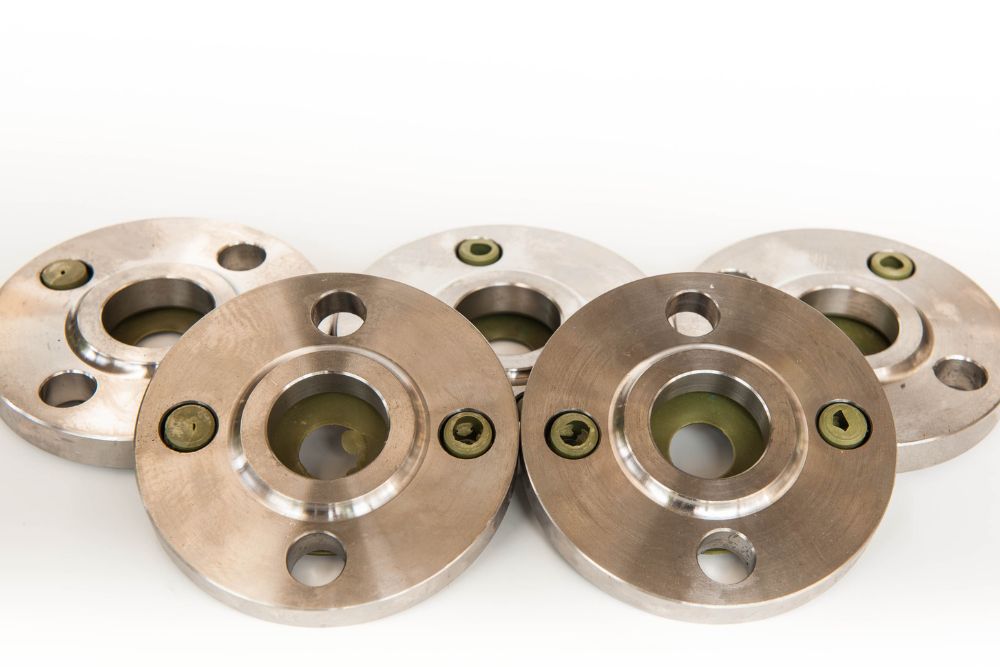ASTM A182 F405
ASTM A182 F405 Stainless Steel Flange
ASTM A182 F405 Stainless Steel Flanges are designed for high-temperature and high-pressure service applications. Alloy F405 is a ferritic stainless steel grade that provides excellent oxidation resistance, good scaling resistance, and moderate corrosion resistance in mildly corrosive environments. It is widely used for flanges, fittings, and other forged components exposed to thermal cycling and oxidizing conditions.
At Emirerri Steel, we manufacture and supply premium-quality ASTM A182 F405 flanges that meet global standards for dimensional accuracy, performance, and durability. Our products are suitable for chemical plants, power generation, refineries, and industrial furnace components.
Key Features
Excellent resistance to oxidation and scaling at elevated temperatures
Good strength and stability in high-temperature environments
Magnetic ferritic structure with good thermal conductivity
Moderate corrosion resistance in mildly corrosive media
Excellent machinability and formability
Cost-effective alternative to higher alloyed stainless steels

Specifications
| Standard | ASTM A182 / ASME SA182 |
|---|---|
| Grade | F405 |
| Material Type | Ferritic Stainless Steel |
| Form | Forged Flanges, Fittings, Valves, and Components |
| Manufacturing Process | Forged / Rolled / Heat Treated |
| Class | Class 150 to 2500 |
| Pressure Rating | PN6 to PN400 |
| Sizes | ½” to 48” (DN15 to DN1200) |
Equivalent Grades
| Standard | Equivalent Grade |
|---|---|
| UNS | S40500 |
| WNR | 1.4002 |
| AISI | 405 |
| JIS | SUS405 |
| EN | X6CrAl13 |
Available Sizes
Nominal Pipe Size: ½” NB to 48” NB
Pressure Ratings: Class 150, 300, 600, 900, 1500, 2500
Face Type: RF, RTJ, FF
Dimensions: ANSI B16.5 / B16.47 / MSS SP-44 / API 605
ASTM A182 F405 Chemical Composition
| Element | Composition (%) |
|---|---|
| Carbon (C) | ≤ 0.08 |
| Manganese (Mn) | ≤ 1.00 |
| Phosphorus (P) | ≤ 0.040 |
| Sulfur (S) | ≤ 0.030 |
| Silicon (Si) | ≤ 1.00 |
| Chromium (Cr) | 11.5 – 14.5 |
| Aluminum (Al) | 0.10 – 0.30 |
| Iron (Fe) | Balance |
ASTM A182 F405 Mechanical Properties
| Property | Value |
|---|---|
| Tensile Strength | 380 MPa (min) |
| Yield Strength (0.2% offset) | 205 MPa (min) |
| Elongation | 20% (min) |
| Hardness (Brinell) | ≤ 170 HB |
ASTM A182 F405 Physical Properties
| Property | Value |
|---|---|
| Density | 7.7 g/cm³ |
| Melting Point | 1425 – 1510°C |
| Modulus of Elasticity | 200 GPa |
| Thermal Conductivity | 25 W/m·K at 100°C |
| Electrical Resistivity | 0.6 μΩ·m |
| Magnetic Properties | Ferritic – Magnetic |
Corrosion Resistance
ASTM A182 F405 flanges exhibit moderate corrosion resistance in mildly corrosive atmospheres, including steam and oxidizing gases. The presence of chromium and aluminum provides resistance to oxidation and scaling up to approximately 650°C. However, it is not recommended for highly acidic or chloride-rich environments where pitting may occur.
Heat Resistance
The alloy offers excellent oxidation and scaling resistance at elevated temperatures due to its aluminum addition, which forms a protective oxide film on the surface. It performs reliably in continuous service up to 650°C and intermittent service up to 800°C.
Heat Treatment
Annealing Temperature: 760–800°C followed by air cooling
Hardening: Not hardenable by heat treatment (only by cold working)
Stress Relieving: Can be done at 650–700°C
Welding
ASTM A182 F405 can be welded using conventional methods such as TIG, MIG, or resistance welding. However, preheating and post-weld annealing are recommended to avoid cracking and restore ductility. Use of matching filler metal (type 405 or 410) is suggested for best results.
Fabrication
The material is easily machined and formed due to its ferritic structure. It is magnetic, exhibits low work hardening, and can be cold-formed using standard techniques. Care must be taken during forming to prevent excessive grain growth.
Applications
Heat exchangers and boilers
Industrial furnace parts
Steam turbine components
Exhaust systems and mufflers
Chemical and petrochemical processing
Power generation plants
Flanges, valves, and fittings in oxidizing environments
